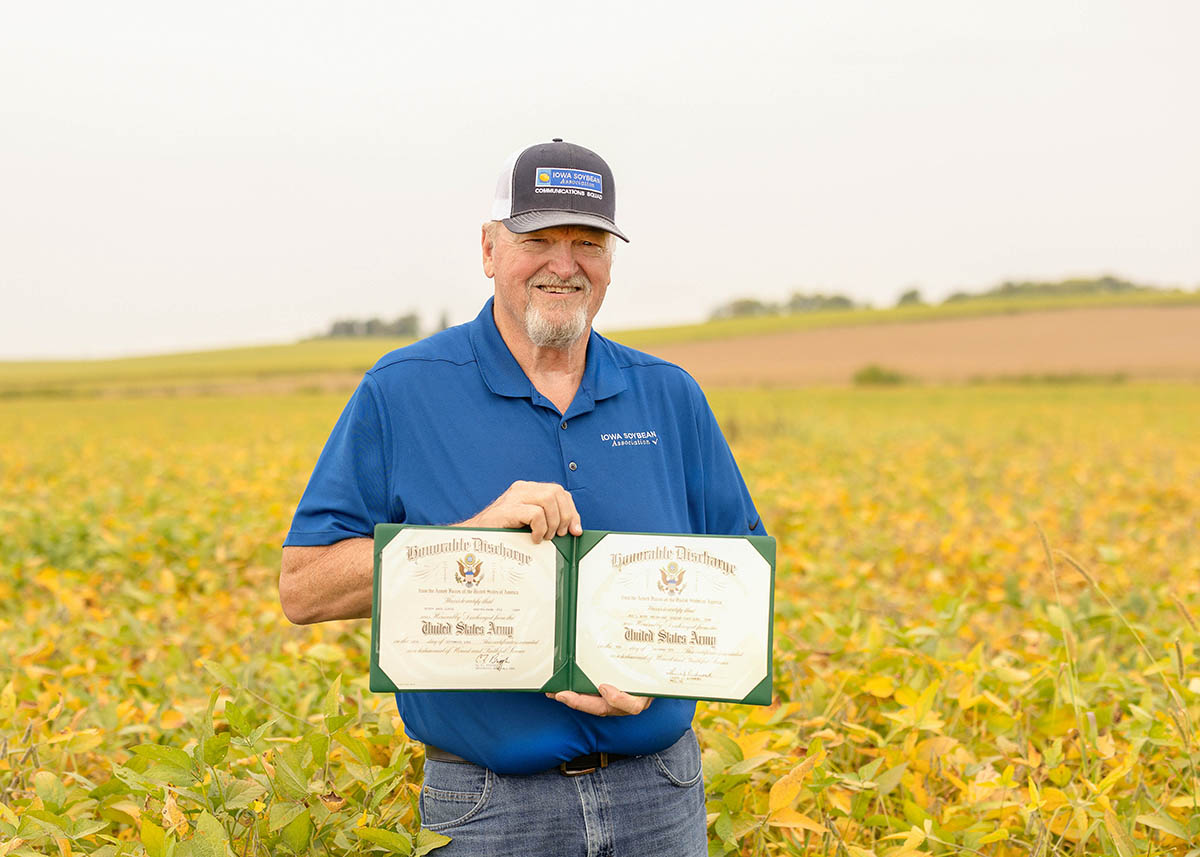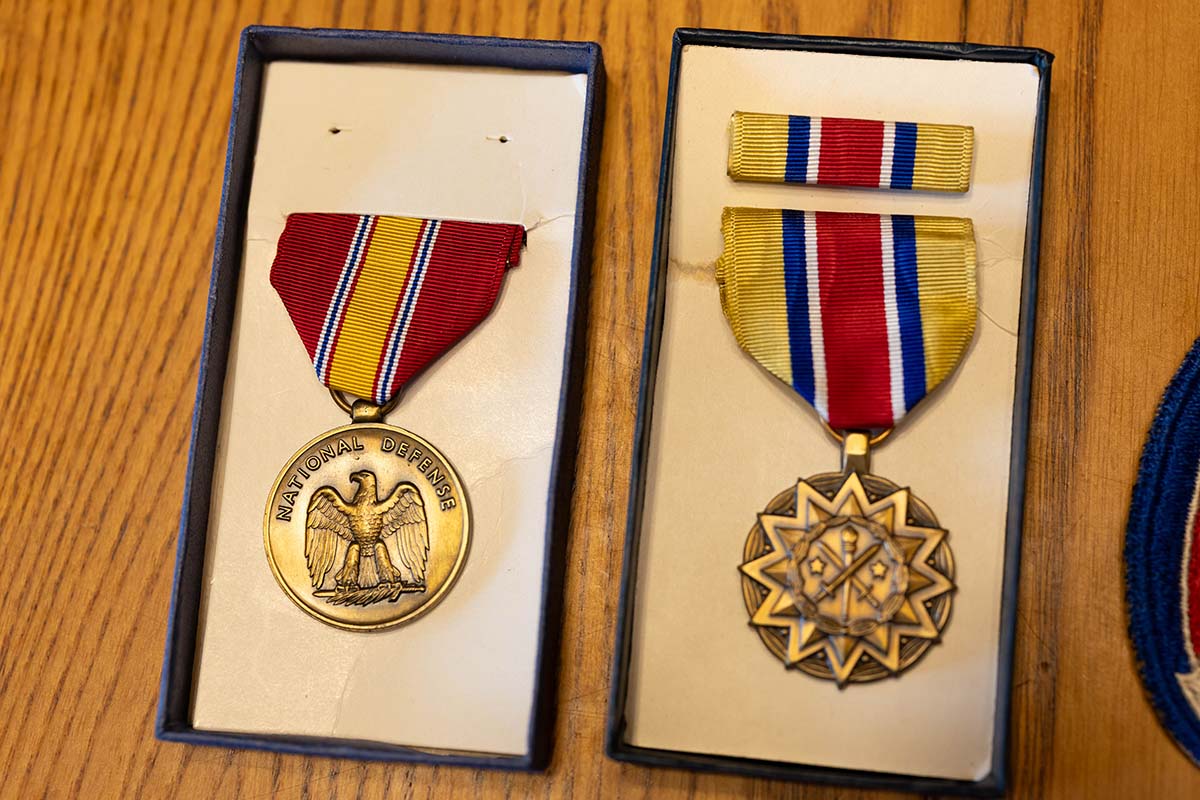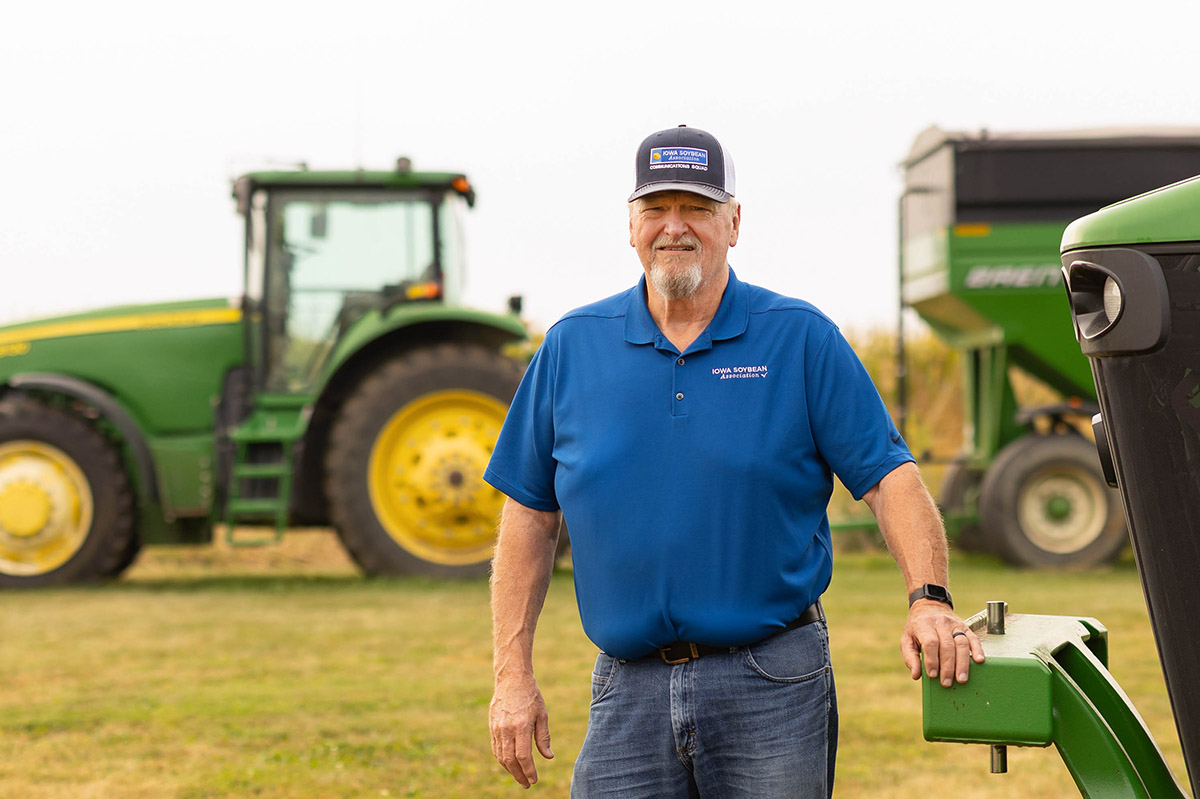
(Photo: Iowa Soybean Association / Joclyn Kuboushek)
From Army base to farm fields
October 31, 2025 | Bethany Baratta
Number 22 didn't mean much to Jack Boyer — until it did. It was his draft lottery number; a low number that guaranteed he would enter the military during the Vietnam War era.
The year was 1971. Boyer was 19 years old with a family of his own, working full time at a soil test lab and studying engineering at Oklahoma State University.
But when his draft number was called, life changed for him and his family.
Draft lottery called
On active duty in the Army, Boyer spent 18 months in Key West, Fla., where he was assigned to Air Defense Artillery, providing defense from enemy aircraft.
"Probably the biggest experience we had was when a Cuban pilot defected with a MiG (fighter jet). We had to call the Air Force to intercept him, and they ended up taking him back to Homestead Air Force Base. They got to keep the plane. It was an older MiG, but they still managed to learn a few things from it," Boyer says
He was later stationed in Germany, serving as a fire control noncommissioned officer. With the assistance of other operators, they monitored radar scopes and helped identify incoming aircraft. Here, they watched Czechoslovakia, making sure there were no unapproved aircraft coming across.
"If the plane didn't send the right code back, we'd escalate to the Air Force — and if necessary, we were ready to fire a Hawk missile," he says.
He and his family lived in Wertheim, a village in southwestern Germany. Living among the citizens, he gained a new perspective of the people and its culture. He made friends there, too — some of whom he's still in contact with, even 50 years later.
"That was a really good experience for me," Boyer says. "Before going into the military, I'd rarely even been out of Oklahoma."
Overseas assignments
After 13 months in Germany, Boyer and his family returned home after being honorably discharged from active duty. He then joined the Army Reserves and served in an Infantry training battalion. As a non-commissioned officer he helped train junior soldiers. Sergeant First Class Jack Boyer was honorably discharged from active reserve on Sept. 16, 1978, and placed on inactive reserve status. That same year, he finished his engineering degree, patching together credits he'd earned in the military and from his earlier coursework. His inactive reserve duty ended in 1981, and he was again honorably discharged.

The newly minted engineer found employment in Iowa with John Deere. That launched a 32-year career with John Deere, including extensive domestic travel and 19 work trips to Brazil within 21 months.
The travel exposed him to large-scale global farming, including soybean farms larger than some towns in Iowa.
"One operation was eleven miles by eleven miles," he said. "Soybean fields as far as you could see."
During his employment with John Deere, the farmer also met his wife, Marion, a teacher. Phone calls eventually became dates, and eventually marriage. Boyer farmed with Marion's dad, Homer, near Reinbeck, until Homer's death in 2010.
"Homer's parents said they wanted to leave the farm in better shape than the way they received it," Boyer says. "Homer wanted to leave it in better shape than he received it, and we want to leave it in better shape than we received it."
Boyer added a master's in engineering professional practice from the University of Wisconsin-Madison before retiring from John Deere in 2011 after a long career in design and test engineering.
From engineer to farmer
Boyer transitioned his engineering mindset to the soil instead of machines. He didn't just plant cover crops; he studied them. Over the past decade, he's completed more than 30 on-farm research trials with Practical Farmers of Iowa, plus dozens more with the Iowa Soybean Association and Iowa State University. He's tried everything from cereal rye to camelina to interseeding cover crops to corn planted in 60-inch row widths, learning not only what worked for his own farm, but what might work for his neighbors.
"For me, the goal is organic matter, erosion control and nutrient cycling," he says. "If we can keep living roots in the ground longer, we're building healthier soils."
The results are clear: reduced nitrogen use, better water infiltration, and a visible difference in soil structure- all without sacrificing yield.

Now serving on the 22-farmer board for the Iowa Soybean Association, Boyer brings the same servant-leader mindset that guided him in the Army. He's generous with his time, hosting field days, answering questions, and encouraging others to think differently about soil health.
"My childhood and the military taught me to do the best with what I've got," he says. "That's farming, too."
Written by Bethany Baratta.
Back